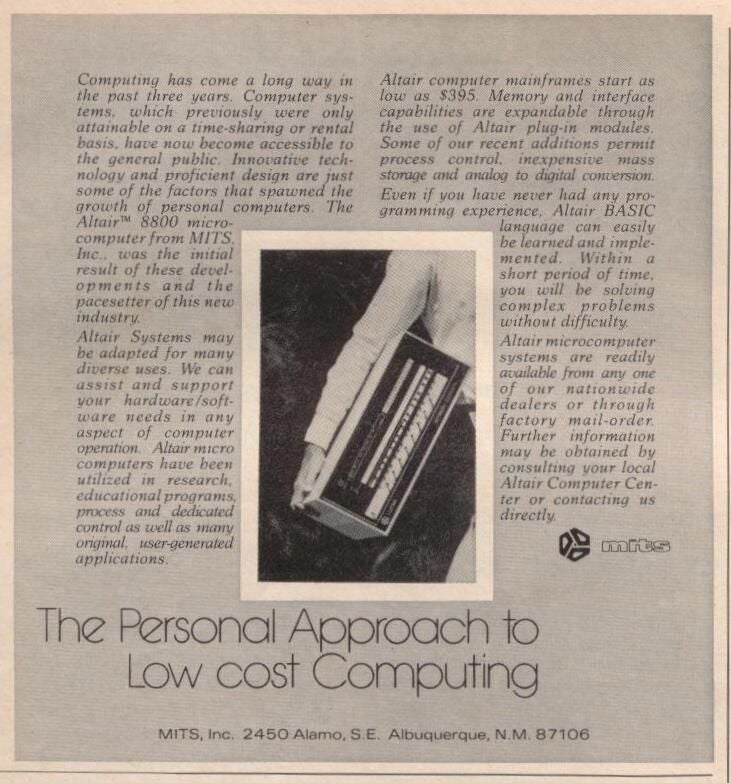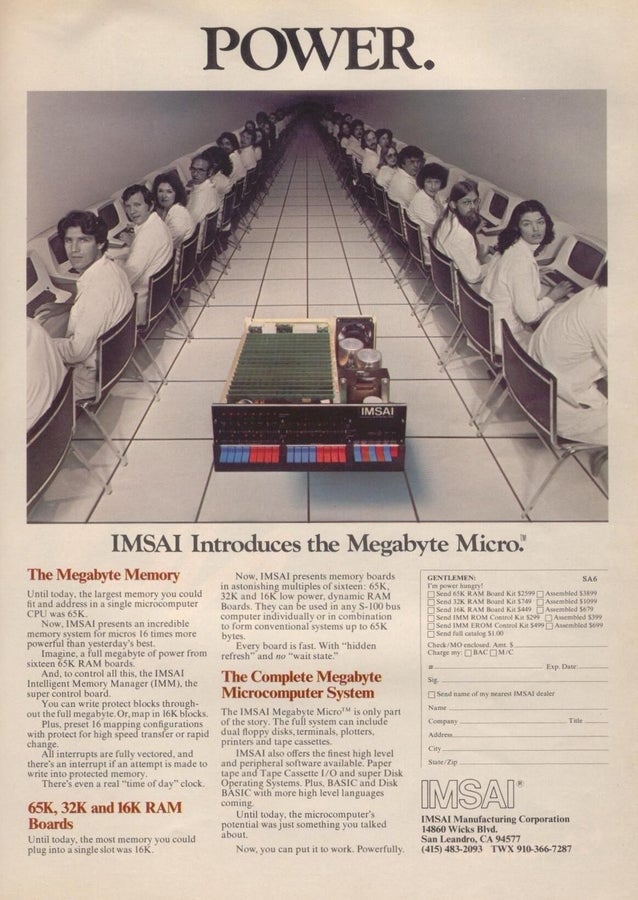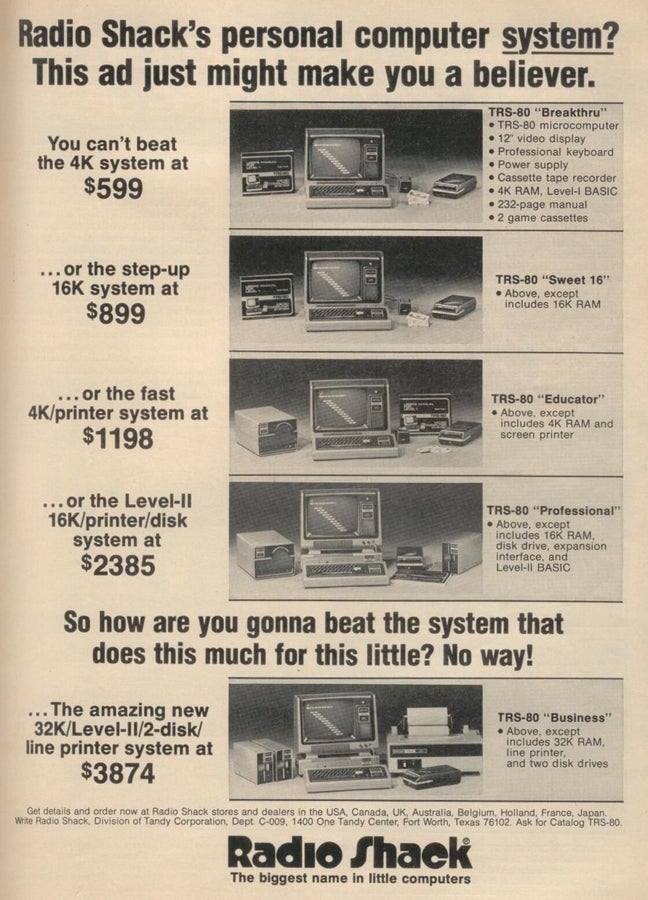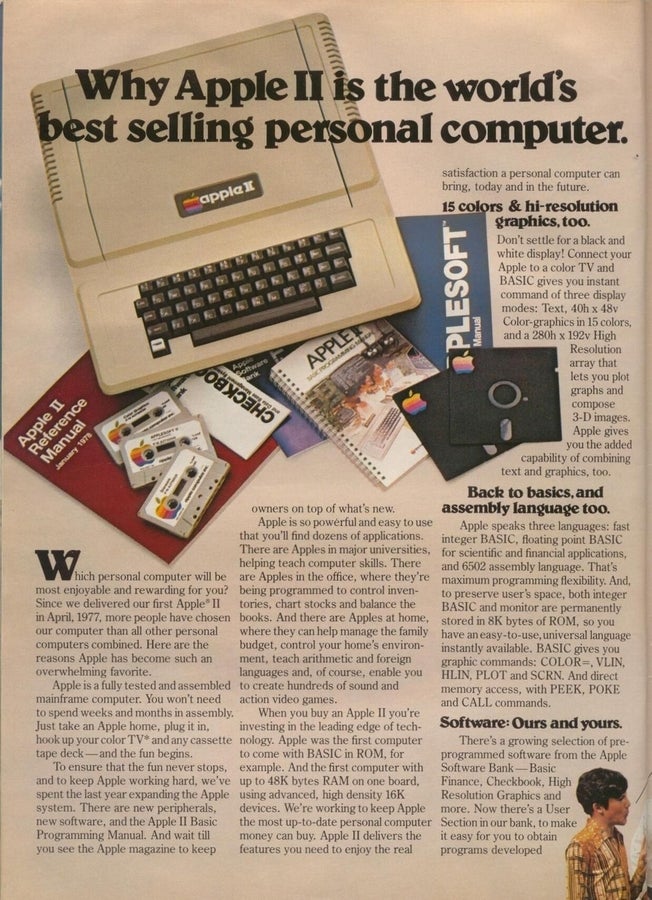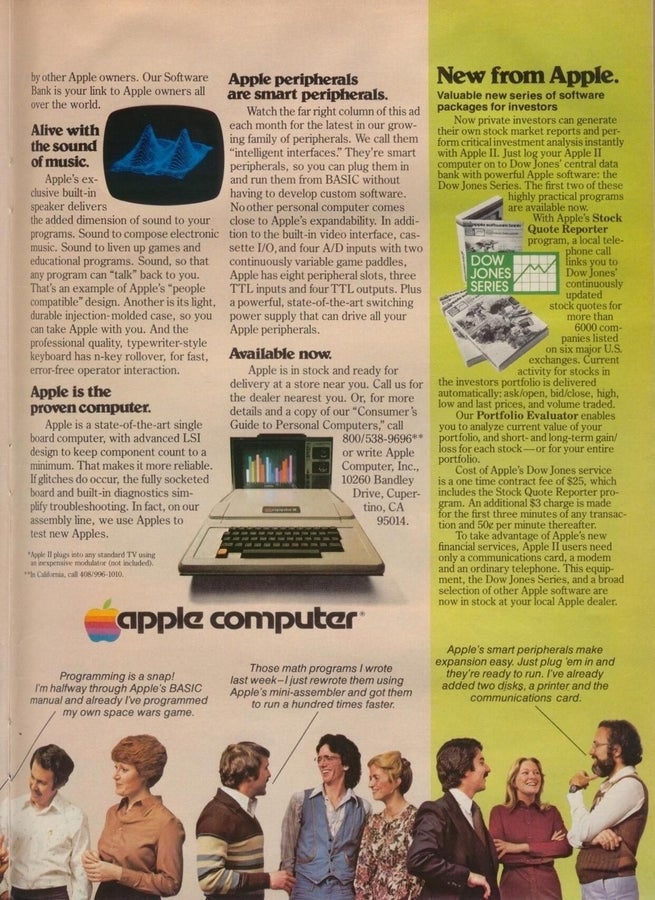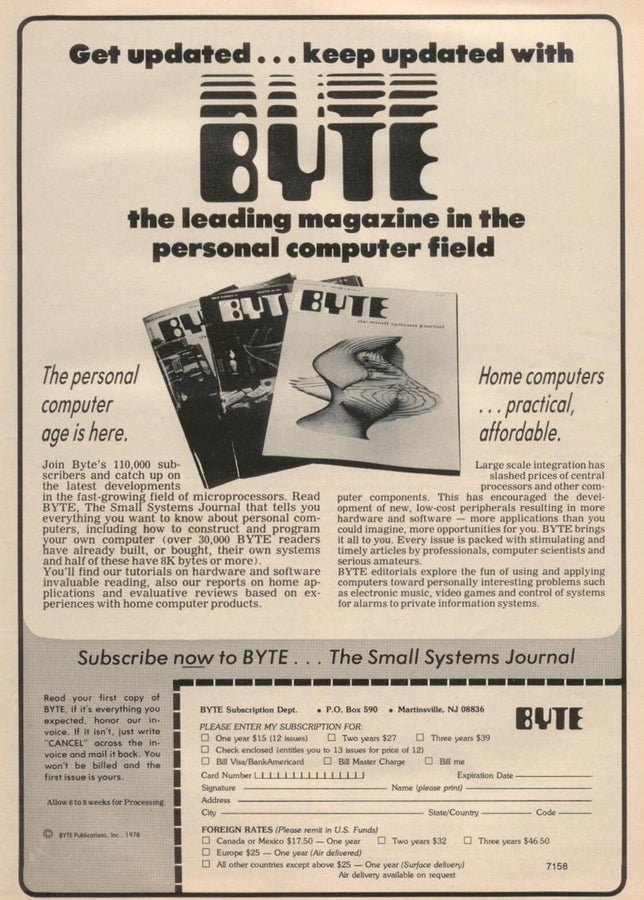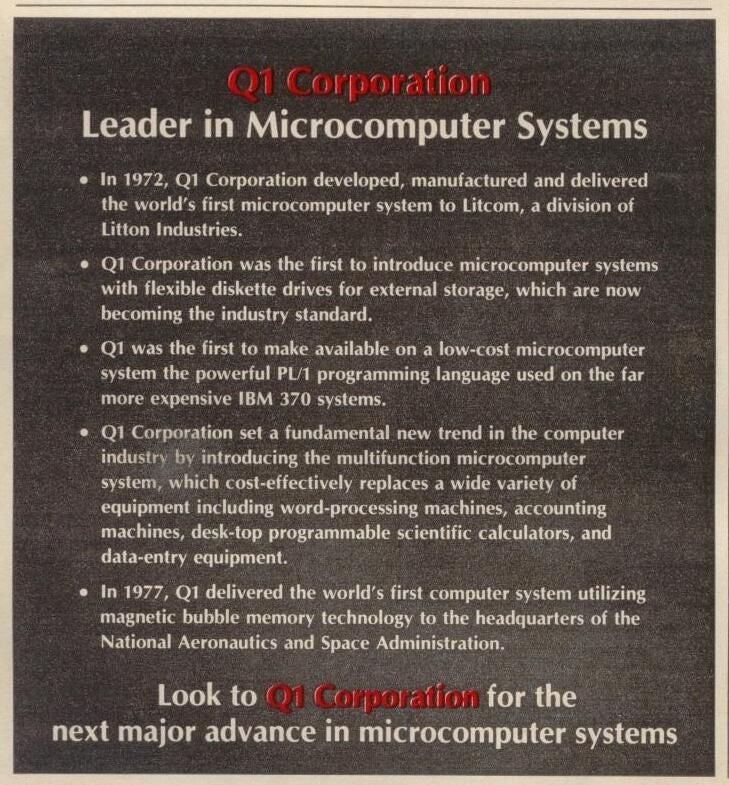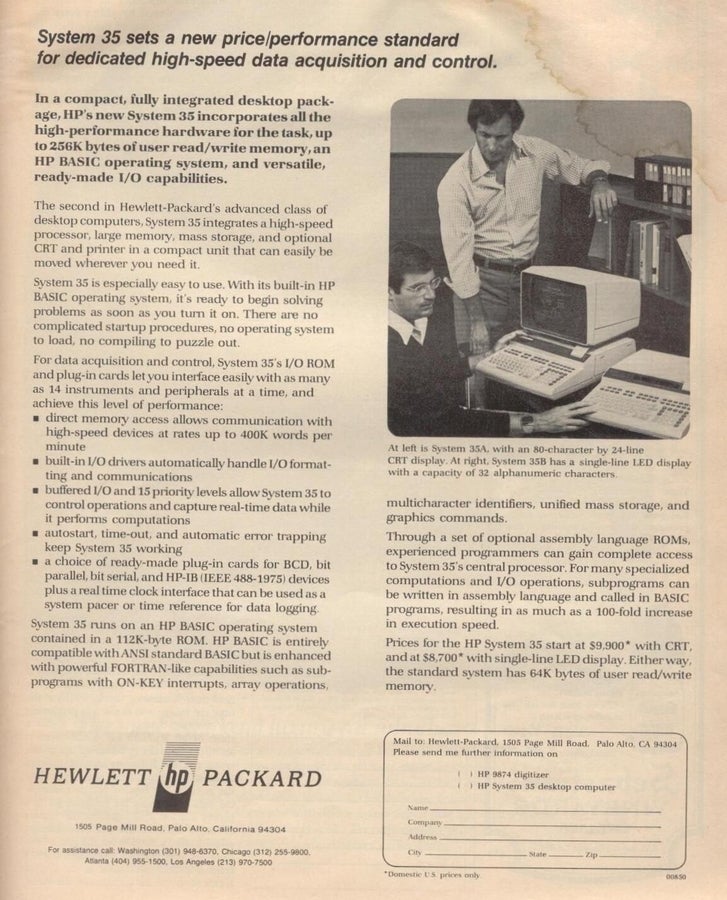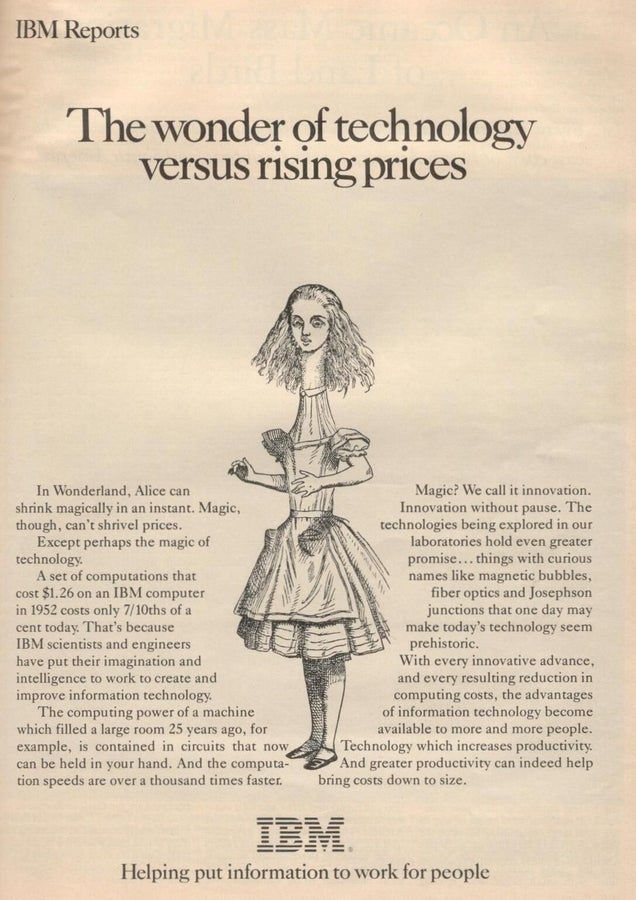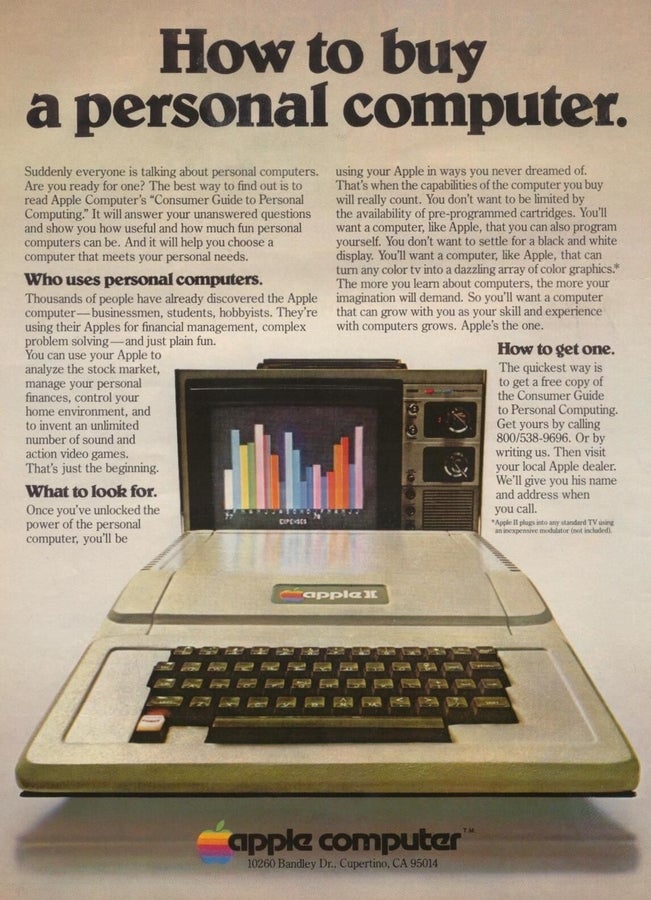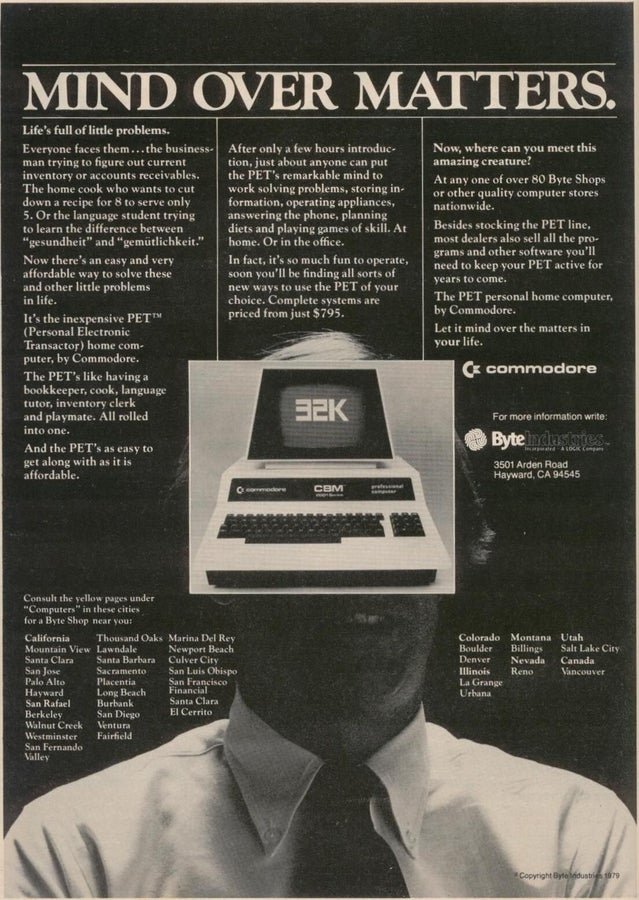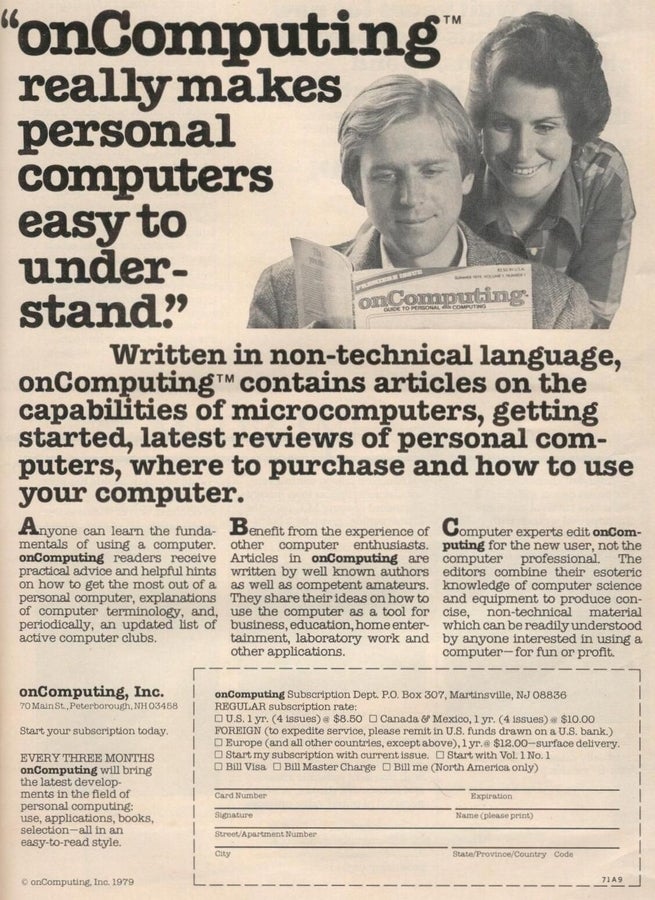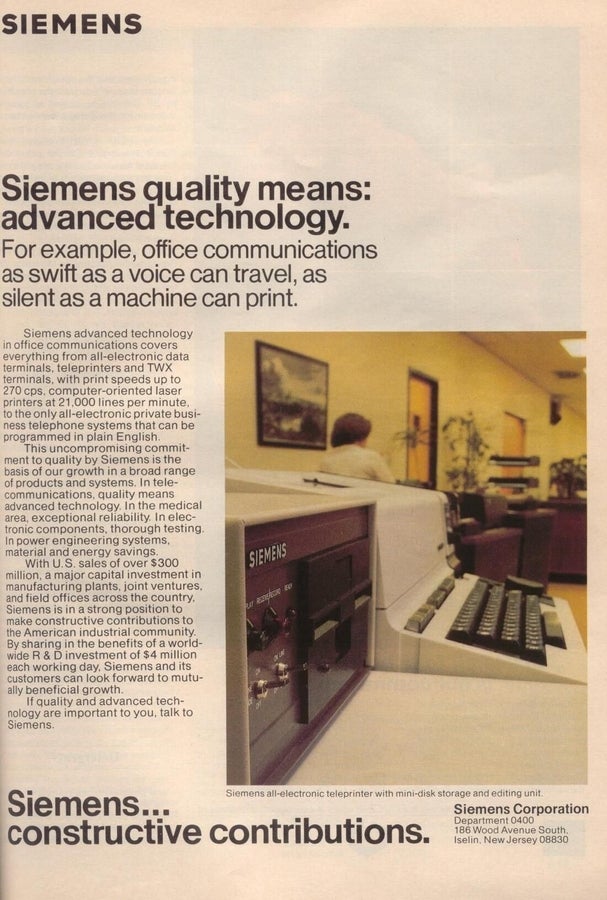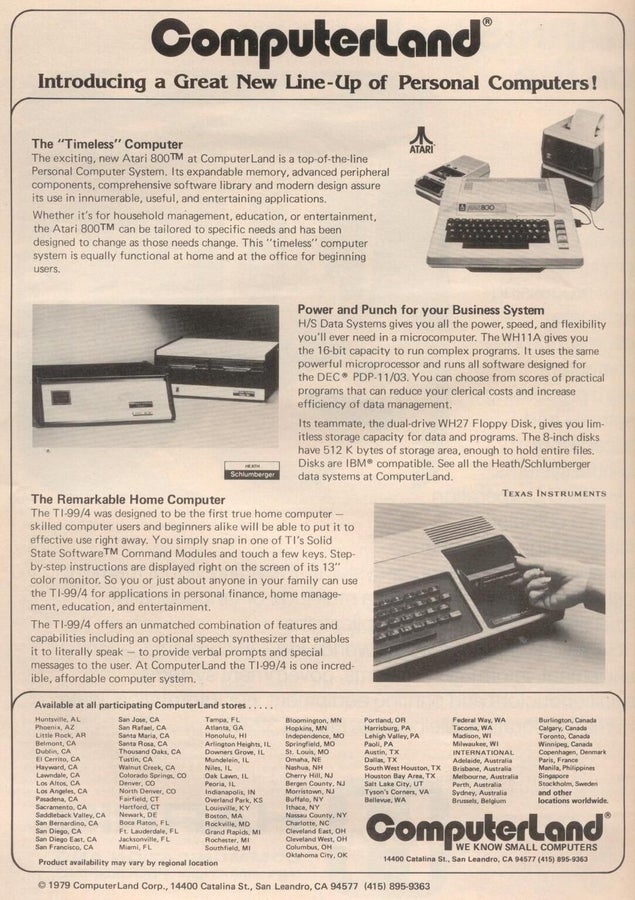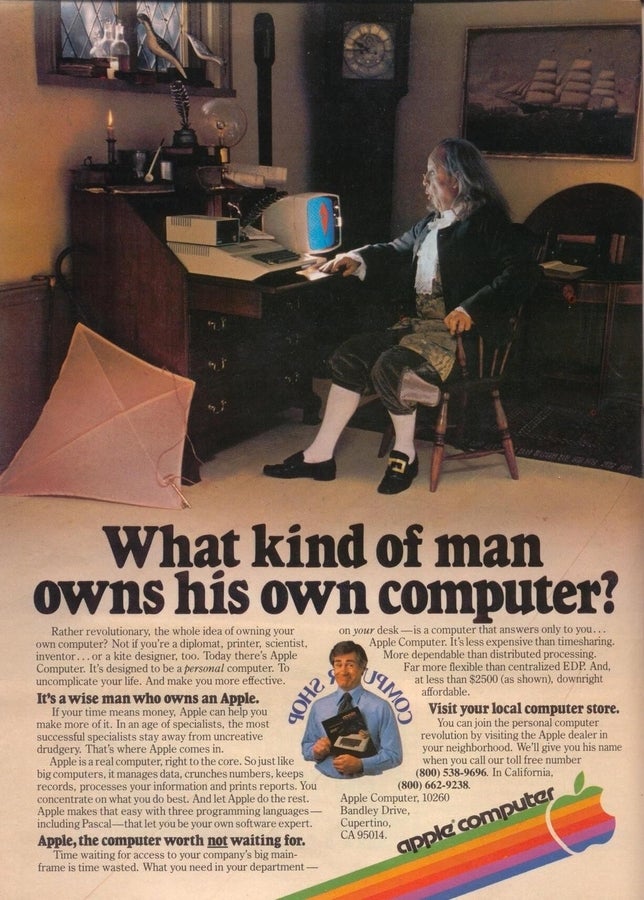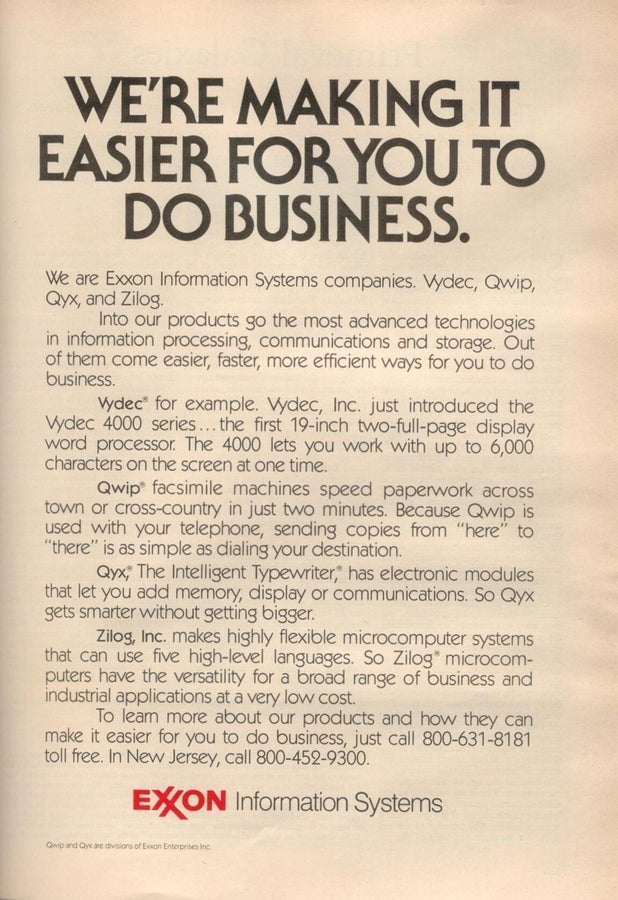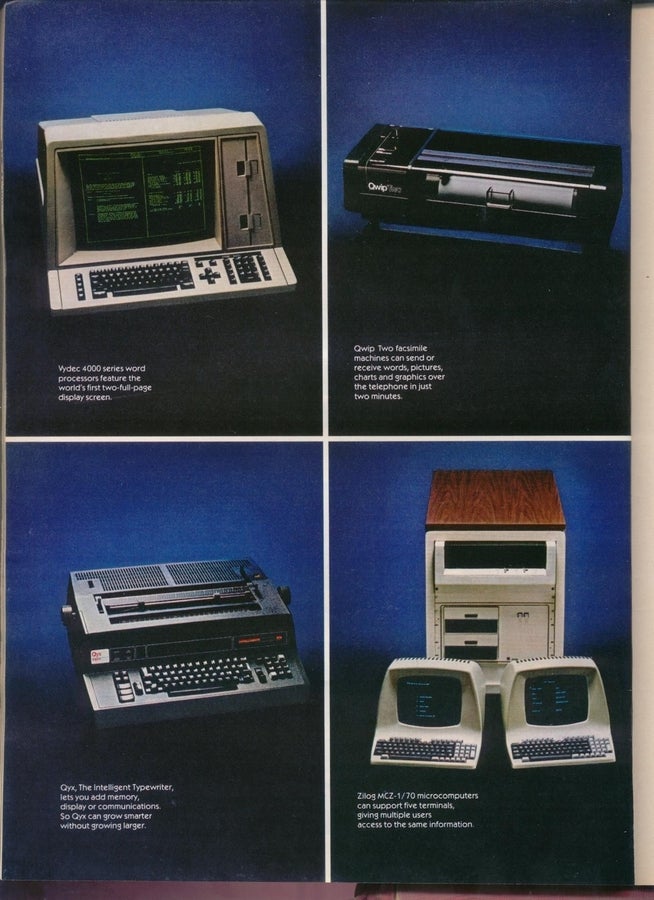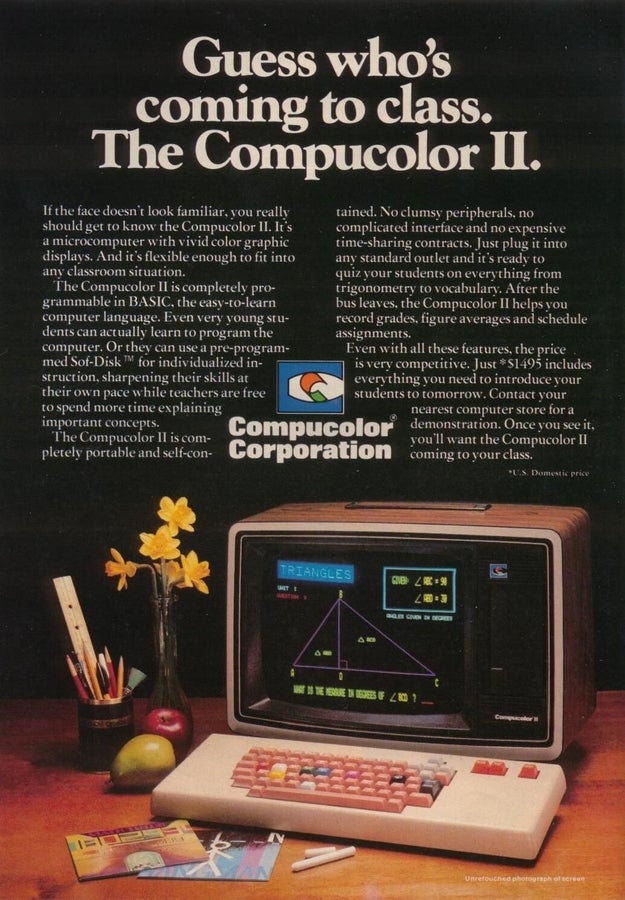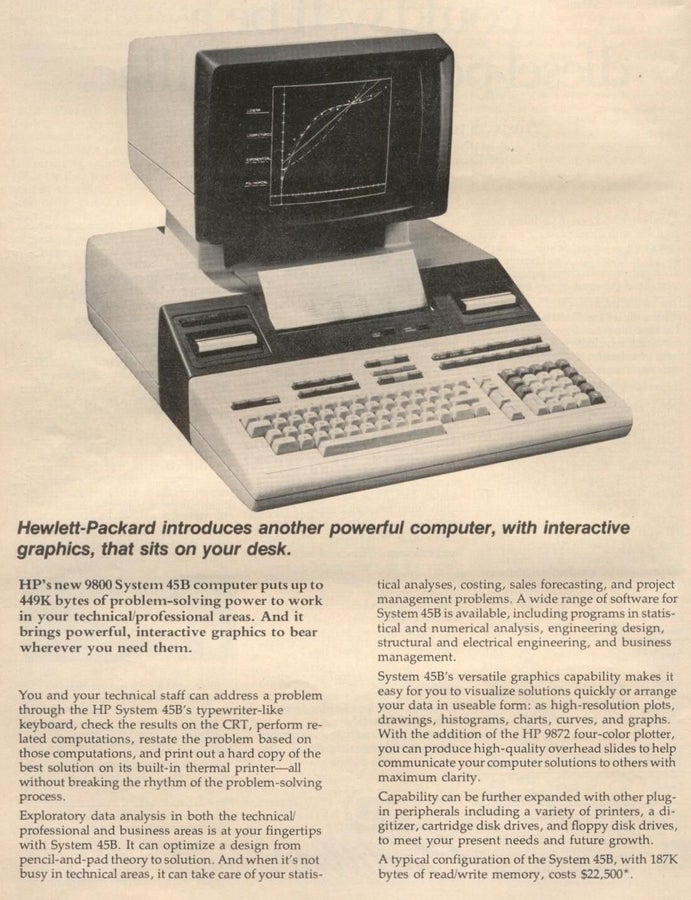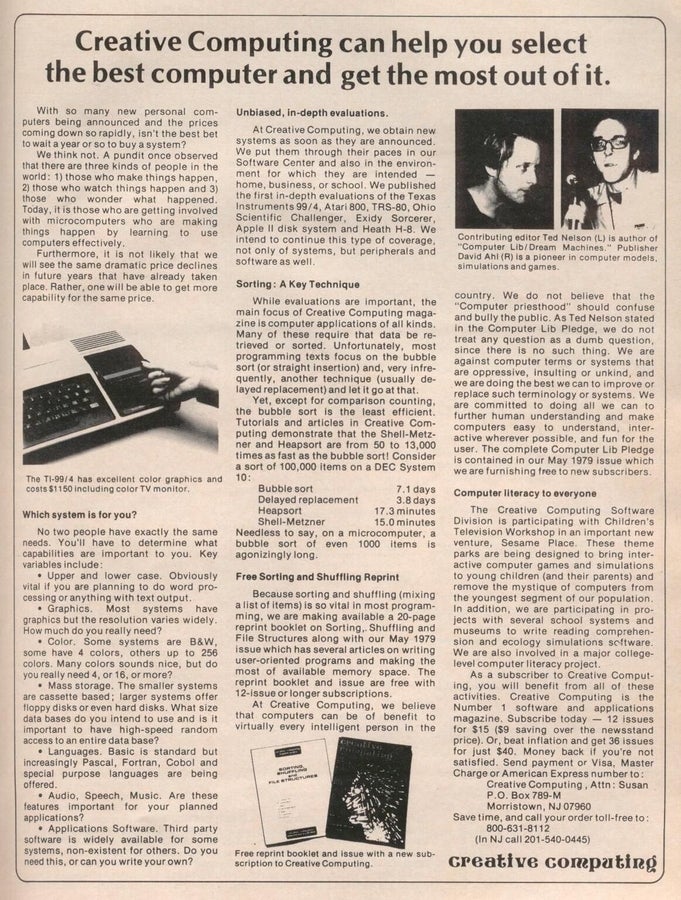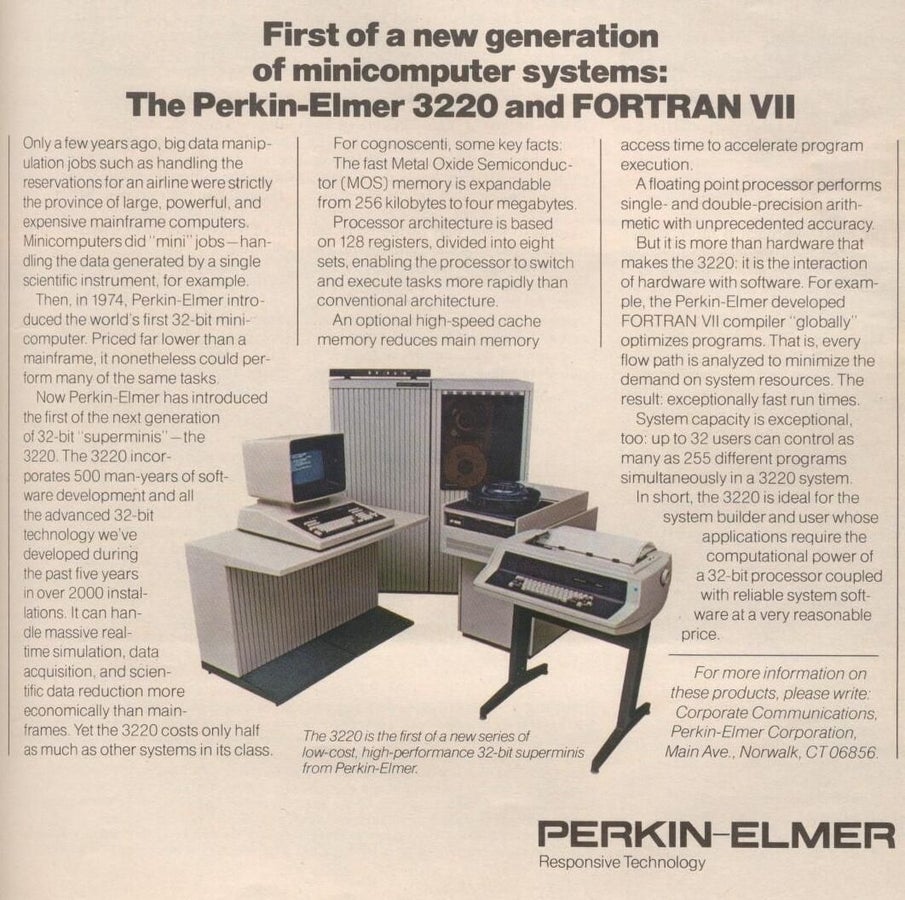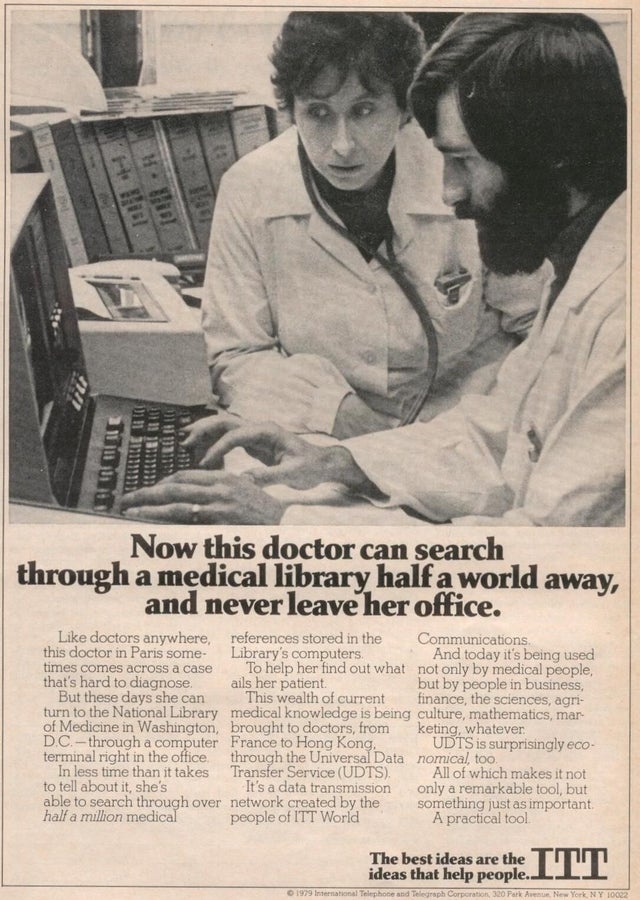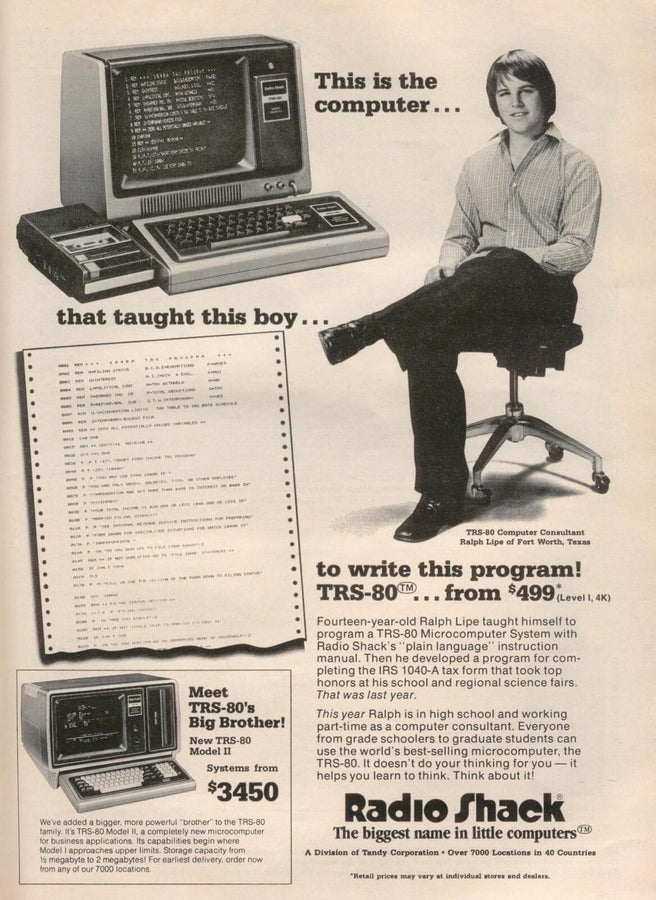Vintage Computer Advertisements from the late 1970s
Image 1 of 25
Altair 8800 ad from 1977
nt
n
ntThe Altair 8800 was basically the system that started the microcomputer revolution and provided a platform for Microsoft’s first product, Altair BASIC. The Altair 8800 was sold by mail order through advertisements like this one.
n
ntFrom the advertisement: Innovative Technology and proficient design are just some of the factors that spawned the growth of personal computers. The Altair 8800 microcomputer from MITS Inc., was the initial result of these developments and the pacesetter of this new industry.
n
ntLook! It’s a portable computer!
n
ntImages compiled by Greg Shultz for TechRepublic
IMSAI Megabyte Micro ad from 1977
nt
n
ntIMSAI or IMS Associates, Inc, was an early success story in the microcomputer industry because they immediately recognized the success of the Altair 8800 and developed a similar unit that has become known as the first clone computer.
n
ntFrom the advertisement: Until today, the largest memory you could fit and address in a single microcomputer CPU was 65K. Now, IMSAI presents an incredible memory system for micros 16 times more powerful that yesterday’s best. Imagine, a full megabyte of power from sixteen 65K RAM boards.
n
ntCheck out the price list!
n
nt
n
ntImages compiled by Greg Shultz for TechRepublic
TRS-80 ad from 1978
nt
n
ntTandy Corporation’s TRS-80 computer became very popular because they were easily accessible via the company’s vast network of Radio Shack stores.
n
ntFrom the advertisement:The amazing new 32K/Level II/2-disk/line printer system at $3874
n
ntImages compiled by Greg Shultz for TechRepublic
Apple II ad from 1978
nt
n
ntBy 1978, the Apple II was well on its way to successfully producing what would become one of the first mass-produced microcomputer products. This is the first page of a full color two-page advertisement.
n
ntFrom the advertisement: Apple is a fully tested and assembled mainframe computer. You won’t need to spend weeks and months in assembly. Just take an Apple home, plug it in, hook up your color TV and any cassette deck tape deck—and the fun begins.
n
ntImages compiled by Greg Shultz for TechRepublic
Apple II ad from 1978
nt
n
ntThis is the second page of Apple’s full color two-page advertisement.
n
ntFrom the advertisement: Apple is a state-of-the-art single board computer, with advances LSI design to keep component count to a minimum.
n
ntImages compiled by Greg Shultz for TechRepublic
Byte magazine ad from 1978
nt
n
ntBy 1978, BYTE Magazine was already claiming more the 100,000 subscribers.
n
ntFrom the advertisement: Over 30,000 BYTE readers have already built, or bought, their own systems and half of these have 8K bytes or more.
n
ntImages compiled by Greg Shultz for TechRepublic
Q1 Corporation ad from 1978
nt
n
nttThe Q1 Corporation was at a big player in the early microcomputer industry.
nt
nttFrom the advertisement: Q1 Corporation was the first to introduce microcomputer systems with flexible diskette drives for external storage, which are now becoming the industry standard.
nt
nttImages compiled by Greg Shultz for TechRepublic
nt
ntt
n
HP System 35 ad from 1978
nt
n
ntHewlett-Packard has been in the desktop computer business for a long time and their second system was the System 35.
n
ntFrom the advertisement: System 35 is especially easy to use. With its built-in HP BASIC operating system, it’s ready to begin solving problems as soon as you turn it on. There are no complicated startup procedures, no operating system to load, no compiling to puzzle out… Prices for the HP System 35 start at $9,900 with CRT, and at $8,700 with single-line LED display.
n
ntImages compiled by Greg Shultz for TechRepublic
IBM ad from 1978
nt
n
ntIn this ad, IBM uses an image of a shrinking Alice in Wonderland to draw a parallel to the shrinking prices of computer time.
n
ntFrom the advertisement: A set of computations that cost $1.26 on and IM computer in 1952 costs only 7/10ths of a cent today. That’s because IBM scientists and engineers have put their imagination to work to create and improve information technology.
n
ntImages compiled by Greg Shultz for TechRepublic
Apple ad from 1978
nt
n
ntA full page color ad from Apple encourages readers to learn more about personal computing.
n
ntFrom the advertisement: Suddenly everyone is talking about personal computers. Are you ready for one? The best way to find out is to read Apple Computer’s u201cConsumer Guide to Personal Computing.u201d
n
ntImages compiled by Greg Shultz for TechRepublic
Commodore Pet ad from 1979
nt
n
ntThe PET was Commodore’s first full featured 8-bit computer.
n
ntFrom the advertisement:It’s the inexpensive PET (Personal Electronic Transactor) home computer by Commodore. Complete systems are priced from just $795.
n
ntImages compiled by Greg Shultz for TechRepublic
OnComputing magazine ad from 1979
nt
n
ntWith computers becoming more appealing to the average consumer, there was a need for making computers, software, and technical jargon easy to understand and OnComputing magazine was there to fill that need.
n
ntImages compiled by Greg Shultz for TechRepublic
Siemens Corporation ad from 1979
nt
n
ntSiemens specialized in office communications systems and claimed sales of over $300 million.
n
ntThis ad features a picture of the all electronic teleprinter with mini-disk storage and editing unit.
n
ntImages compiled by Greg Shultz for TechRepublic
ComputerLand ad from 1979
nt
n
ntAs the IMSAI microcomputer started to face more competition, the owners of the company decided to branch out founded ComputerLand retail computer store, so that they could benefit from their competitors successes.
n
ntThis advertisement features the Atari 800, the H/S Data Systems WH11A, and the TI-99/4
n
ntImages compiled by Greg Shultz for TechRepublic
Apple Ad from 1979
nt
n
ntIn this advertisement, Apple implies that if computers were around in Ben Franklin’s day, he would have used an Apple.
n
ntFrom the advertisement: Time waiting for access to your company’s big mainframe is time wasted. What you need in your department—on your desk—is a computer that answers only to you…Apple Computer.
n
ntImages compiled by Greg Shultz for TechRepublic
Exxon Information Systems ad from 1979
nt
n
ntWho knew that Exxon sold microcomputers and other office equipment in the 70s?
n
ntThis two page ad features the Vydek 4000 19-inch two-page display word processor, Qwip Two facsimile machine, Qyx Intellignet Typewriter, and the Zilog MCZ-1/70 microcomputer system.
n
ntImages compiled by Greg Shultz for TechRepublic
Exxon Information Systems ad from 1979
nt
n
ntThis is the second page of Exxon Information Systems’ full color two-page advertisement.
n
ntExxon Information Systems’s product line: From the top left- Vydek 4000, Qwip Two, Qyx, and Zilog MCZ-1/70.
n
ntImages compiled by Greg Shultz for TechRepublic
Compucolor II ad from 1979
nt
n
ntThe Compucolor II was designed and marketed for use in schools.
n
ntFrom the advertisement: The Compucolor II is completely portable and self-contained. No clumsy peripheral. No complicated interface and no expensive time sharing contracts.
n
ntImages compiled by Greg Shultz for TechRepublic
HP 9800 System 45B ad from 1979
nt
n
ntAimed at technical professionals, the System 45B’s typical configuration provided 187K of read/write memory and sold for $22,500.
n
ntFrom the advertisement: You and your technical staff can address a problem through HP System 45B’s typewriter-like keyboard, check the results on the CRT, perform related computations, restate the problem based on those computations, and print out the hard copy on its built-in thermal printer—all without breaking the rhythm of the problem-solving process.
n
nt Images compiled by Greg Shultz for TechRepublic
Creative Computing magazine ad from 1979
nt
n
ntCreative computing magazine featured articles on computer application as well as in-depth computer reviews.
n
ntFrom the advertisement: At Creative computing, we obtain new systems as they are announced. We put them through their paces in our software Center and also in the environment for which that are intended—home, business, or school.
n
ntImages compiled by Greg Shultz for TechRepublic
Perkin-Elmer 3220 ad from 1979
nt
n
ntWhile microcomputers were causing the storm, minicomputers were along for the ride.
n
ntFrom the advertisement: Only a few years ago, big data manipulation jobs such as handling reservations for an airline were strictly the province of large, powerful, and expensive mainframe computers… Now Perkin-Elmer has introduced the first of the next generation of 32-bit u201csuperminisu201d—the 3220.
n
ntImages compiled by Greg Shultz for TechRepublic
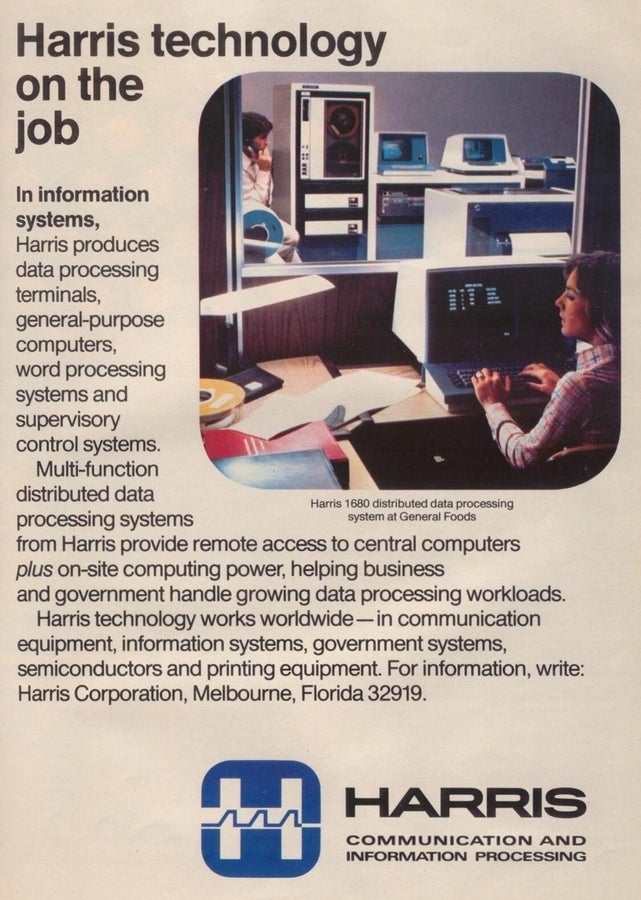

Harris Communication and Information Processing ad from 1979
Harris Communication and Information Processing ad from 1979
nt
n
ntHarris specialized in multi-function distributed data processing systems for business and government.
n
ntThis Harris ad features a picture of the Harris 1680 distributed data processing system at General Foods.
n
ntImages compiled by Greg Shultz for TechRepublic
Intecolor 3621 ad from 1979
nt
n
ntThe big selling point for Intelligent Systems’ computers was their high quality color graphics.
n
ntFrom the advertisement: Our new Intecolor 3621 puts the color advantage in a desk-top computer. The 13-inch screen can display 32 lines of 64 ASCII characters, as well as plot graphics on a 128 x 128 grid—in eight brilliant colors.
n
ntImages compiled by Greg Shultz for TechRepublic
ITT ad from 1979
nt
n
ntITT World Communication created a world wide data transmission network to make data easily accessible to professionals everywhere.
n
ntImages compiled by Greg Shultz for TechRepublic
Radio Shack ad from 1979
nt
n
ntThis Radio Shack advertisement features a 14 year old computer consultant and shows of the TRS-80 Model II.
n
ntImages compiled by Greg Shultz for TechRepublic
-
-
Account Information
Contact greg shultz
- |
- See all of greg's content
